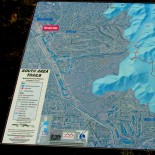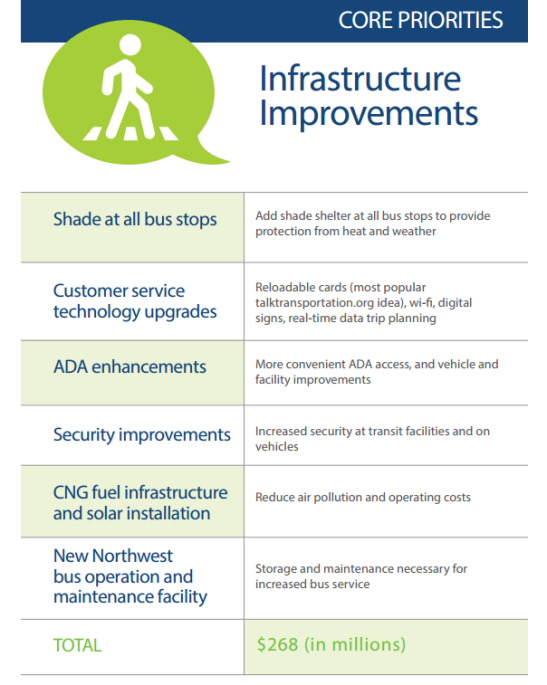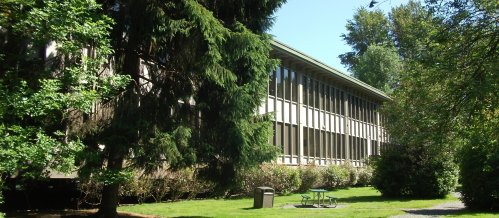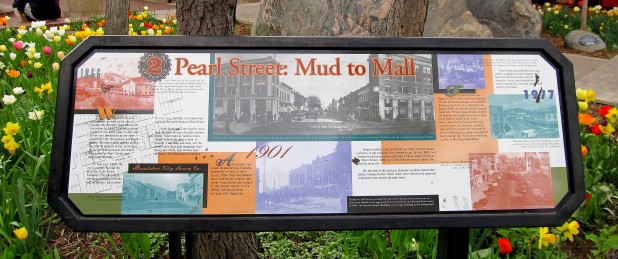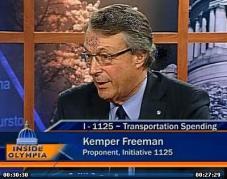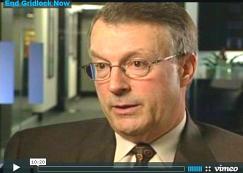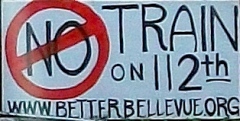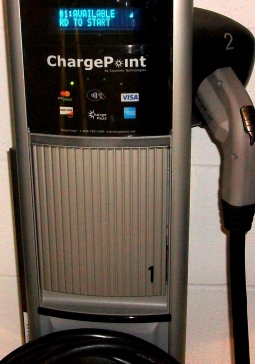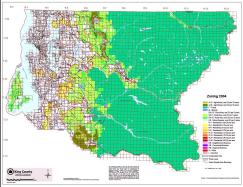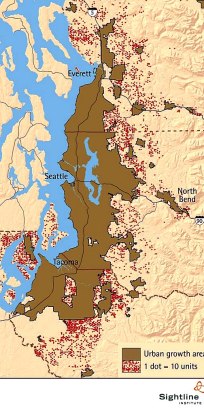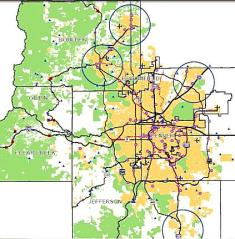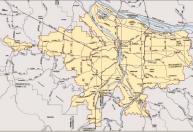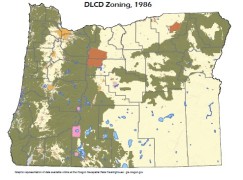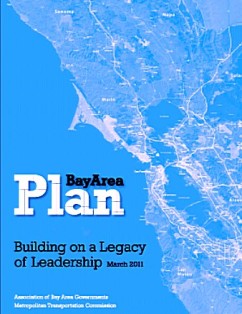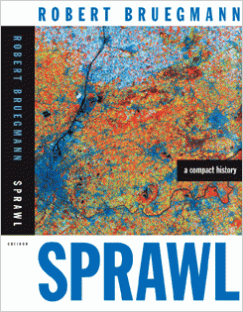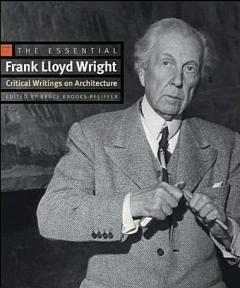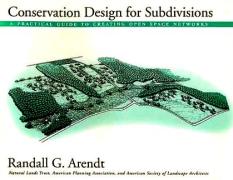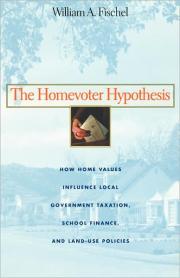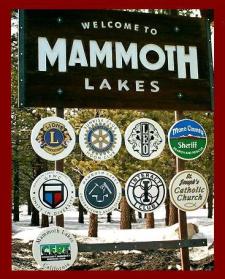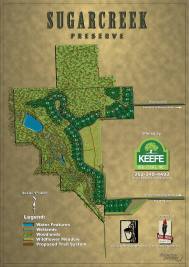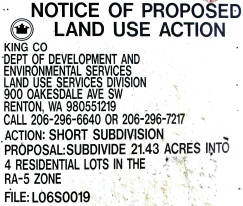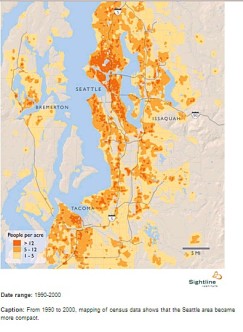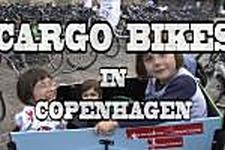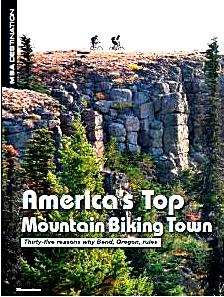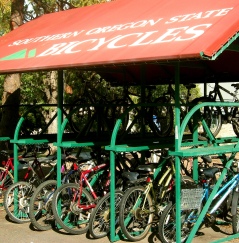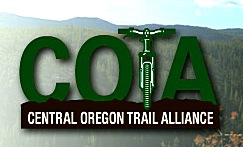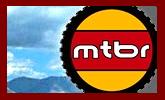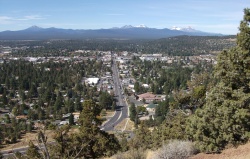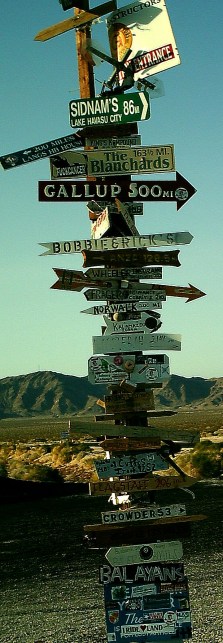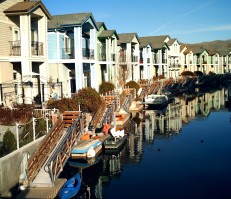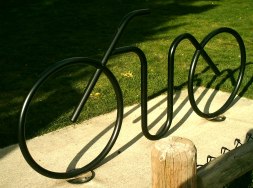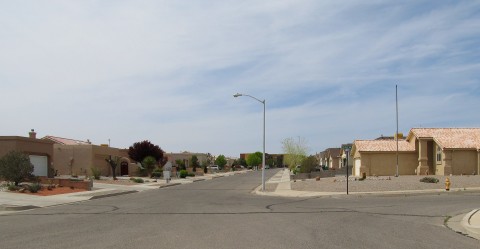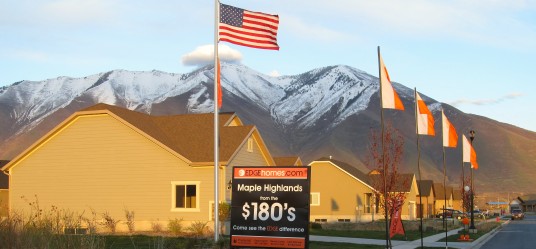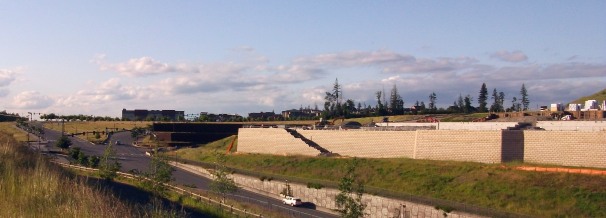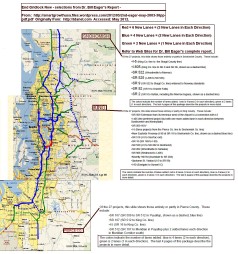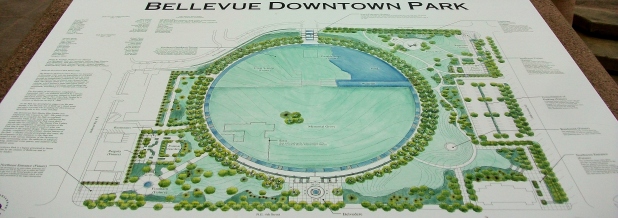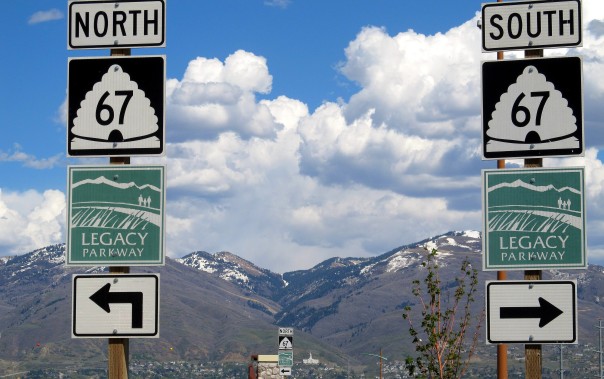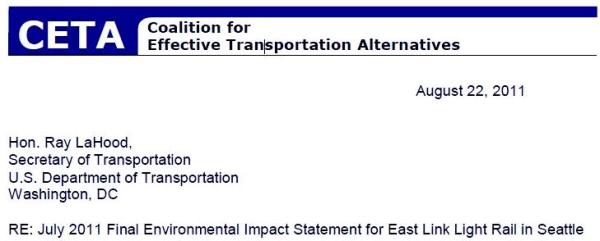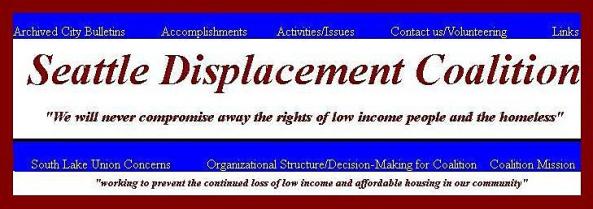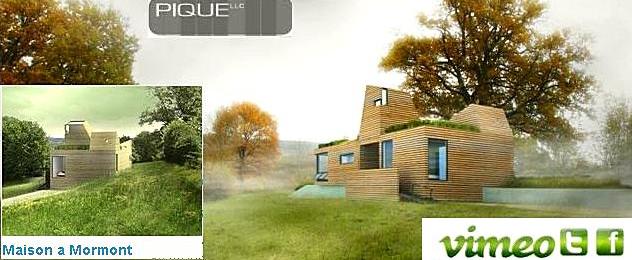"Smart Growth" and "New Urbanism" Compared with "Large Lot Zoning" (Tom Lane) [ Home Page – Click Here]
(May 17, 2017) – Traditional "Large Lot Zoning" is "Greener" than "Smart Growth" within Urban Growth Boundaries . . . Copyright 2009 – 2017 . . . Tom Lane . . . Photographing California, Arizona, Nevada, New Mexico, Colorado, Utah, Oregon, and Seattle, Washington.
Vote No on 104 (MovePHX 104) – Vote No on Phoenix Light Rail

Far North Scottsdale – What Phoenix USED To Look Like – And It Will Get Worse With Light Rail and Smart Growth
 (Tom Lane Under Construction First draft July 7 2015, Last Updated August 22, 2015)
(Tom Lane Under Construction First draft July 7 2015, Last Updated August 22, 2015)
Also read my other post on Scottsdale light rail – https://smartgrowthusa.wordpress.com/2015/05/24/north-scottsdale-and-north-phoenix-dark-money-or-open-space/
And, for additional posts on Smart Growth in Phoenix, Tempe, and Scottsdale – http://wordpress.com/category/scottsdale/
North Scottsdale near Pinnacle Peak as the Featured Image – Why?
At some point, Phoenix was a nice city, just like the north part of Scottsdale. Unfortunately, it’s become too big. Now, it will become too dense, under plans for smart growth and light rail.
What ashame that a city that used to be as nice as North Scottsdale near Pinnacle Peak will suddenly go downhill, as 31.5 billion dollars, that could be going to add open space, plant trees, and improve the schools goes towards light rail, which only takes 1% of all cars off the road.
MovePHX 104 Light Rail Opponents FROM Arizona
These Arizonans have lived here for decades. Be sure to check out their Anti-104 web sites. Please note: While the MovePHX Yes on 104 web site receives money from special interest groups (see below), I have absolutely no idea if any of these Anti-104 bloggers receive money from these types of groups. Therefore, I cannot endorse the credibility of information presented on these blogs, since special interest money against light rail often comes from biased Libertarian think tanks and the Koch Brothers (see my web site disclaimer for more).
First, Phoenix Councilman Sal DiCiccio Against Light Rail – Facebook Page – Updated Daily – Council District #6. Please note: https://www.facebook.com/DiCiccioSal
Sal DiCiccio Twitter Account https://twitter.com/sal_diciccio
Onward Arizona Vote No on 104 – http://www.onwardaz.org/phoenix-prop-104.html
Onward Arizona Twitter Account – https://twitter.com/@OnwardAZ
Matthew Kenney, Sonoran Alliance – http://sonoranalliance.com/tag/light-rail/
Matthew Kenney, Twitter Account – https://twitter.com/_takenforaride
John Washington of “Scottsdale Trails” http://scottsdaletrails.com/
Maricopa County Republican Party http://www.westernfreepress.com/2015/07/08/maricopa-county-gop-opposes-phoenix-prop-104-light-rail-scam/
Anna Brennan for Phoenix Mayor http://brennanformayor2015.com/
The Coyote Blog http://www.coyoteblog.com/ which includes a link to Randal O’Toole’s report on Phoenix Light Rail
Seth Leibsohn Show http://960thepatriot.com/pages/the-seth-leibsohn-show
Poll – Over 60% of Phoenicians Want 31.5 Billion Spent Elsewhere besides Light Rail
31.5 Billion Dollars is a lot of money, and most Phoenicians would like it spent elsewhere besides light rail. This poll was conducted by Michael Noble of MBQF Consulting – Click Here for my other page on the poll, quote from Mr. Noble below –
“Almost two-thirds of respondents believe their tax-money should be prioritized elsewhere when asked, “NOW, do you feel the city of Phoenix should prioritize transportation and spend $33 Billion dollars over the next 35 years that includes a proposed light rail expansion or do you believe the $33 billion dollars could be best spent in other areas such as education, public safety, police and fire, and health and disability services.
Press 1 if you believe that the light rail and transportation is the best investment – 34.83%
Press 2 if you believe that the money would be best used for other public needs – 65.17%
Vote NO on 104, and Hire More Teachers
Indeed, today, a new study from “Wallet Hub” found that Arizona was ranked 48th out of 50 for the quality of its schools, along with a severe teacher shortage. Phoenix Councilman Sal DiCiccio reports that one mile of light rail costs $161 million dollars, and that can hire 2900 new teachers !
Recently the Phoenix Business Journal reported that two anonymous businesses did not move to Arizona, due to the horrible education system. A few highlights, quoted from the article:
“Phoenix competes heavily against Salt Lake City, Denver, Austin and Dallas for companies and business expansion. Recently, two companies chose from among those other cities rather than Phoenix.
The total number of jobs between both of these companies totaled 3,000. And they were high-paying, too. The average wage at each company was more than double the Phoenix average per capita wage.
“My key managers didn’t want to relocate to Arizona despite the golf and the weather,” said one decision-maker. “They were afraid they would not find good schools for their own children. They also felt that the state’s reputation for poor education would affect the ability to recruit talent from outside.”
So Why do Only Republicans Oppose Light Rail?
Well, I’m not a Republican! Although, the list above of light rail experts certainly gives that impression.
I’m an Independent, and speaking for all of us that oppose light rail, we oppose it because it just doesn’t work.
Nobody rides it, it’s too expensive to build, people prefer cars, and as I show below, more people work at home, ride bicycles, vanpool, or walk, than the train. Clearly, a 31 Billion dollar tax increase is not worth it, so why not hire 200,000 more teachers, build more bike lanes and bike trails, and hire more park rangers for Phoenix parks?
Raising Taxes for Light Rail Doesn’t Work since Nobody Rides Light Rail
Raising sales taxes for light rail does not work, since nobody rides light rail. Therefore, the system is subsidized, so everyone is paying sales taxes to keep the system alive. In my ex-hometown of Seattle, people voted it down the first time (2007), and it barely won the second time (2008).
Now, nearly 10 years later in Seattle, the light rail lines are only taking 1% of all vehicle trips. Gridlock on the freeways has increased since no new freeway lanes have been added. There have been at least three lawsuits over light rail. 60% of gas taxes are spent on transit, with only 40% on new freeway lanes.
U.S. Census – Light Rail Ridership Decreasing in Most U.S. Cities
While light rail ridership decreased in most major U.S. cities from 2000 to 2009 (burgundy graph below), bicycling did not decrease in any, and increased in cities who built bike lanes (blue graph below).
In the second chart also from the Census, approx. 8 million rode public transit in the 1960 census (yellow), and this amount was unchanged in 2010. Clearly, since 1960, there has not been any additional demand for light rail.
Please CLICK IMAGES to ENLARGE and READ TEXT. The data is from the 2000-2009 American Community Survey.

CLICK IMAGE to ENLARGE and READ TEXT. From: http://www.metrojacksonville.com/article/2012-jul-commuting-mode-share-in-the-30-largest-us-cities Accessed: July 20, 2015

PLEASE CLICK IMAGE to ENLARGE and READ TEXT – US Census 2009 ACS Transportation Survey. From: http://www.census.gov/prod/2011pubs/acs-15.pdf Accessed: October 2, 2011
In Big Cities, More People Bike than ride Light Rail
Bicycling in central Phoenix is very dangerous, since there are no bike lanes. Adding light rail makes things even more dangerous, since travel lanes are narrowed. The City has not built any bike lanes on Camelback Road near light rail (see photos below).
In the brown “Myth: Density Is The Answer” graph below, cities with a density of 2000 to 4000 persons per square mile (Phoenix is 2700, Scottsdale is 1100, and Tempe is 4300), 8.6% bike or walk to work, compared to less than 1% who ride the bus or light rail.
Since The City of Phoenix has not built bike lanes on Camelback near its light rail stations, then they are incompetent and have refused to add bike lanes that up to 8.6% of people would use, compared to less than 1% who ride light rail.
Density – The Reason Why Light Rail Only Works in New York and Not Anywhere Else
Phoenix is spread out with a low population density; 70% of households have a home with a private yard. Phoenix’s density is 2700 persons per square mile (from this US Census Link). Dr. Bill Eager consultant to Kemper Development in Bellevue, Wa. shows that In New York City, people live in towers so tall that there are 50,000 persons per square mile on Manhattan Island, 27,000 within the City Limits, and 4,200 within the metro area. Source: Dr. Bill Eager, click here). It would take hundreds of years to use eminent domain to condemn everyone’s home in Phoenix and Scottsdale, and build enough smart growth apartment towers to make more than 1% ride light rail.
Clearly, 31.5 Billion on Yes on 104 Would Be Best Spent on Bike Lanes and Bike Paths
Scottsdale has bike lanes and bike paths everywhere (maps), as part of its transportation master plan. Cities who want to take cars off the road must invest in bike lanes, bike trails, and sidewalks. The college town of Corvallis, Oregon has invested in bike lanes and bike trails. With a density of 3700 persons per square mile, 9% commute by bike, as I show at this post. Corvallis is the highest in the nation. In my other post, I explain how the Phoenix REACH Recreation Area, parallel to Bell Road in North Phoenix, could be improved with trails for bicycles and horses. That’s a much wiser use of taxpayer money.
The 31.5 Billion Phoenix Tax Increase Only Benefits Those who Live Along Light Rail Lines
New Yorkers ride light rail since they just take elevators down their apartment towers to the train stations that are everywhere. But in Phoenix and all other major cities, it’s easier to walk 20 feet to your garage to your personal automobile, then it is to walk 2 to 10 miles to the nearest light rail station. I’ve noted that park and ride lots on Camelback road in Phoenix are 80% empty in the middle of the day.
Over 90% of the population of Phoenix will never live along a light rail line. Therefore, they are subsidizing with sales taxes those that do. But that’s even a stretch. Most people who do live along a light rail line will still drive their cars, since as Americans, we love our cars.
If bike lanes were along light rail lines, they would ride their bikes, since human nature dictates that we prefer to travel freely wherever we want, and whenever we want, not following light rail schedules.
Dr. Bob Bruegmann: Density must Exceed 10,000 Persons for Light Rail to Work, but only 6% will ride.
Dr Robert Bruegmann of the University of Illinois at Chicago, a very Liberal university, writes that light rail requires densities of at least 10,000 persons per square mile; here’s his article in the Journal of Transport and Land Use: http://robertbruegmann.com/_images/publications/JLUT.pdf.
Seattle’s density (i.e.the entire urban area including Bellevue, Everett, the Auburn Valley, Tacoma, etc.) is about 2,500 persons per square mile, and, Phoenix’s density (the city limits) is only 2,700 persons per square mile (see density map of most of the Phoenix metro, below), while the metropolitan area density (including all the suburbs, and miles of state trust land between suburbs, and grazing land) is well under 2,000.
Dr. Bob Bruegmann’s Caveat – Relevant for Phoenix Light Rail
However, Bruegmann continues by stating that even with very high densities, that light rail only works when “trip origins and destinations are tightly clustered, for example, when one side of the trip is a place with a very high density of jobs, for example a downtown or an airport.”
But in Seattle and Phoenix, less than 9% of people work downtown. Most people in both cities commute from suburb to suburb. That is why the various Arizona government agencies (i.e. the Arizona Department of Transportation (ADOT) have built a freeway system with concentric circles, along with a system of very wide 132′ six lane boulevards.
Given that a density of 10,000 will never occur in the Phoenix or Seattle metros, and that most jobs are in the suburbs, then light rail is impractical for both markets. I think it’s clear that ADOT knows what they’re doing, and Phoenix is relatively uncongested, ranking at 107 out of 199 (L.A. is #1, see IMRIX Traffic Congestion Scorecard Data) . Indeed, could the Yes on MovePHX campaign be a result of special interest groups, and have nothing to do with ADOT? (Yes, keep reading.)
The Light Rail Industry Tries to Manipulate Human Behaviour by Increasing Density with Smart Growth Towers
The transit unions try to manipulate human behaviour by forcing us to live along rail lines in tall, smart growth (apartment) towers. The transit industry attempts to acheive densities of 7 residential units per acre, requiring smart growth towers along the lines, according to Dr. Bill Eager, internationally famous traffic engineer in Bellevue, Washington, Chair of the Eastside Transportation Commission in Bellevue, and consultant to Kemper Freeman of Kemper Development Company.
The transit industry’s standard (for lobbying purposes) of 7 units per acre is a density of 4480 housing units per square mile! Phoenix is only 2700 units per square mile!
With the U.S. average household size of 2.63 persons per household, this “transit industry standard” is 11,782 persons per square mile!
But Scottsdale’s density is just 1100 persons per square mile, and Phoenix is just 2700. So, it’s the developers who really want smart growth towers, along with the transit unions.
Developers paid for the “MovePHX 104 initiative (see below for the smart growth section in Tempe) so they can build their smart growth towers. While smart growth and light rail are billed as green, they are not since they increase density. When density increases, traffic congestion gets worse. But even if they could acheive high densities, the density graph below shows that only 6% of commuters ride light rail when the density is at industry standards of just over 10,000 persons per square mile!
So is it worth tearing up trees and using eminent domain to take businesses in Phoenix?
Light rail is an outdated concept, since most cities are “Polycentric.”
Indeed, the concept of light rail lines connecting smart growth apartment towers and places of employment is based on the so-called “monocentric” model of a city, where most of the jobs are in the traditional downtown area, and most of the workers live in the suburbs, commuting by train to the central city.
But this doesn’t happen in Phoenix. Most cities fit the polycentric city model of Dr. Jan Brueckner of UC-Irvine. In this model, the central business district (CBD) is surrounded by one or more secondary business districts (SBD’s). Phoenix has several secondary business districts, including Scottsdale, Mesa, Peoria, Chandler, Gilbert, and Glendale.
Most people commute from suburb to suburb, and less than 9% work downtown. The light rail line does not connect people to these suburbs. So it is easier for them to drive to work.
Furthermore, Phoenix is especially suburban, with 70% of the city as single family residential housing, and 30% as multi family housing. Compare that to New York City at 0% ! The burgundy graph below from Dr. Jed Kolko of Trulia shows cities and how suburban they are. My drawing below modified by Dr. Brueckner’s textbook shows the population density of all the cities around Phoenix. As you can see, Phoenix and Scottsdale are among the least dense, and no cities in the valley are even close to the 10,000 persons per square mile that will cause 6% to ride light rail.
Light Rail does NOT help the Poor and Middle Class Get to Work
In Phoenix, the poor and middle class live closer to downtown, and work for the rich who live and have their companies in the suburbs. For example, Colliers International reported that 54,100 people worked in the Scottsdale Airpark, at 2950 businesses (expected to grow to 75,500 persons and 4000 firms by 2030).
Dr. Brueckner points out that public transit can be inadequate from central city areas to the suburbs. And, he mentions that racial discrimination makes it hard for the poor to live near their jobs in the rich suburbs.
MovePHX’s light rail lines do not go to any of the secondary business districts in the region, since Tempe’s line is in another city. Therefore, voting to extend the line within Phoenix will not help any commuters get to the suburban jobs in my drawing above.
The only viable options that would take people 10 to 20 miles to the suburbs, and remove cars from the road, are 1) Bus Rapid Transit (see below) 2) Vanpool and park and ride lots (see below) However, MovePHX is shortsighted and provincial, as it does not provide funding for suburb to suburb commuting.
Densities in Most Cities are Decreasing because People want Homes with Backyards
As most cities have developed a middle class in the past century, people have moved to the suburbs, since they can afford a private yard. The middle class does not live in smart growth towers along light rail lines. Millenials, Gen X, and Gen Y do live downtown, but eventually move to the suburbs, as Dr. Jed Kolko found, and discussed at my other post on families.
Dr. Robert Bruegmann continues, in another article:
“[E]very affluent urban area in the world, with the single exception of Hong Kong, where land use has been more stringently controlled than in any Western democracy, has densities that are a fraction of typical urban densities one century ago.
Where urban densities often topped 100,000 people per square mile in 1900, in the Atlanta today the figure currently stands at an exceptionally low 1,800 people per square mile. As people have become richer they have demanded more space, and they have gotten it everywhere there has been a truly democratic government and anything resembling a free market in land.”
Financing of the Vote Yes on Move PHX came from developers of Smart Growth Towers:
Developers paid for the Yes on Move PHX 104 web site, such as the McCarthy building company of St. Louis, who operates in several cities including Phoenix. These developers want to build smart growth towers along light rail lines. Then, they can become billionaires and charge $1800 a month for one bedroom apartments, encouraging yuppie singles to live along light rail lines.
What ashame that the Move PHX 104 bills light rail and urban living in towers as green, when instead it’s the Republican contractors who are getting richer from the infrastructure. I would like to increase the corporate tax on large construction companies, so that they have less of an incentive to monopolize building projects in several states. Why are the Democrats for voting yes on 104 when they support the smaller, family owned contractors?
However, those of us who are single will not be renters forever. We’ll eventually get married and move to the suburbs. Smart growth and light rail do not create downtown areas that will be inhabited by a permanent population of residents. They’ll eventually move, in fact, we might move to small towns that do not have towers to raise children.
“Small towns” that do not have smart growth downtowns (at least, not yet!) include Cave Creek, Thousand Oaks, Ojai, Pismo Beach, Truckee, Incline Village, Boulder City, Carson City, Show Low, Folsom, Roseville, Rocklin, Lincoln, and Auburn, California. Scottsdale and Durango, Colorado used to have nice, low density downtowns with no traffic, until Republican smart growth money came to town with their towers.
Corporate taxes should increase on construction companies and home builders, since they are taking so much money by way of their high rents on millenials, GenX, and GenY, who rent their smart growth towers. Unfortunately, in Seattle, it’s the same story. The Puget Sound Regional Council requires light rail and smart growth towers.
However, the towers are built by multi-national construction companies who clearcut all the trees, such as Port Blakely Holdings, as I show at this post – “Clearcutting for Smart Growth” On that note, NAFTA and all other free trade agreements should be repealed, to prevent multi-national companies from building tens of thousands of apartment units in smart growth cities.

The Arizona Republic shows where the Yes on 104 MovePHX money came from (left chart). The Yes on 104 MovePHX web site shows the various construction companies who paid for the campaign. Corruption! Source: MovePHX web site, and from the Arizona Republic, http://www.azcentral.com/story/news/local/phoenix/2015/07/01/construction-transit-groups-fund-transit-tax-campaign/29575221/
The World Famous Density Graph
As referenced above, this graph shows that more people ride bikes than transit. Therefore, investing in bike lanes and sidewalks takes more cars off the road than light rail. But it’s not the only way, scroll down for bus rapid transit and carpooling on HOV lanes.
The map shows density of blocks in the Phoenix metro area. Most of the region is at very low densities, especially areas that have undeveloped state trust land such as the west valley, Scottsdale, the Desert Ridge area, and far north Phoenix.

From: Dr. Bill Eager / Kemper Development Company http://www.kemperfreeman.com/wp-content/uploads/2012/12/MythRealityPresentation1-2.pdf Accessed: July 7, 2015

From: The Transport Politic: http://www.thetransportpolitic.com/2010/04/16/more-light-rail-presents-itself-as-the-answer-for-a-growing-phoenix/ Accessed: June 1, 2015
Don’t Europeans All Take the Train to Work?
In most cities, no. There is a myth that Europeans are sophisticated and do not drive cars. However, this is not true, as Dr. Bob Breugmann of the University of Chicago writes below. In fact, European cities have actually declined in density, despite government policies that have tried to force density (just like the MovePHX Yes on 104 Campaign):
“With this decline in density has come a spectacular rise in automobile ownership and use. Despite draconian governmental policies to inhibit automobile use and the expenditure of billions of dollars on public transportation, transit ridership in Europe has remained largely flat since World War II while automobile ownership and use have soared.
Although many people like to observe that Europeans still drive less than Americans, in fact the upward trajectory of automobile ownership and automobile use have increased in Europe in almost exactly the same way as in the United States, simply with a time lag due to a lag in affluence.”

From: Jed Kolko’s data in Jordan Weissman’s article “Almost Half of America’s Biggest Cities Are Basically Built Like Giant Suburbs.” From: http://www.slate.com/blogs/moneybox/2015/05/22/urban_density_nearly_half_of_america_s_biggest_cities_look_like_giant_suburbs.html Accessed: June 7, 2015
Bus Rapid Transit Much Cheaper than Light Rail
Buses carry more people than light rail trains, but they’re still in the yellow transit bars of the graph above. However, something called bus rapid transit works better than rail. BRT involves dedicated bus lanes for buses that travel across town with relatively few stops. For the Seattle area, Bellevue engineer James MacIsaac prepared a chart of light rail vs.BRT. As you can see, bus rapid transit covers hundreds of miles of more roads, compared to light rail. Overall, people still prefer cars, bicycles, and walking.
In the Seattle area, transportation engineer Dr. Richard Harkness concluded below (the blue graph) that bus rapid transit (BRT) would cost 0.7 on arterials (boulevards, like Camelback in Phoenix) compared to 34.8 for light rail (in millions of 2000$).
In addition, Dr. Harkness demonstrated that the Seattle area HOV network could be used for bus rapid transit. Many Phoenix area freeways also have this system. The cost for BRT on freeways is 9.0 compared to 34.8 for light rail (in millions of 2000$). CLICK TO ENLARGE AND READ TEXT:

CLICK TO ENLARGE AND READ TEXT: From: Dr. Richard Harkness: “How Sound Transit Abused the Planning Process to Promote Light Rail” http://www.globaltelematics.com/pitf/harknessreport.pdf Accessed: July 24, 2015

Civil engineer James MacIsaac’s regional transportation plan, with bus rapid transit includes lines extending outside the urban growth boundary. From page 19 of: http://www.bettertransport.info/rt/WhatYouNeedtoKnow8.31.07.pdf Accessed June 21, 2011.
More People Carpool than Ride the Bus or Train

Dr. Richard Harkness 200 page Report available at http://www.globaltelematics.com/pitf/harknessreport.pdf
Nationwide, more people carpool than ride the bus or train. One goal of some transportation engineers is to take cars off the road, to alleviate congestion and air pollution. Below, Dr. Richard Harkness found that over 20% of people carpooled to work in the three county region around Seattle.
But Harkness also states that light rail does nothing to encourage carpooling, since it does not finish the region’s HOV lane system (for vehicles with 2 or more passengers). Note what Dr. Harkness says that if 5% more people would carpool, then it would take the same number of cars off the road as 21 miles of light rail! For the graphs below, please CLICK TO ENLARGE AND READ TEXT:

CLICK TO ENLARGE AND READ TEXT: From: Dr. Richard Harkness: “How Sound Transit Abused the Planning Process to Promote Light Rail” http://www.globaltelematics.com/pitf/harknessreport.pdf Accessed: July 24, 2015

CLICK TO ENLARGE AND READ TEXT: From: Dr. Richard Harkness: “How Sound Transit Abused the Planning Process to Promote Light Rail” http://www.globaltelematics.com/pitf/harknessreport.pdf Accessed: July 24, 2015
Don’t We Need Light Rail for the Disabled?
Public transit is very important for those who cannot drive, or who cannot afford to own a car (such as college students). However, light rail does not help the disabled that much, since it only operates on a fixed line (as shown in James MacIsaac’s map above), whereas buses, and bus rapid transit, travel everywhere. Carpools and vanpools can operate on any street, and all streets can have bike lanes and sidewalks.
More People Work At Home than Ride Transit – And The Number is Growing
7% of people work at home in Denver, Portland, and Austin, higher than the number of people who take transit (light rail and buses). About 6% work at home in Phoenix, San Francisco, San Diego, and Seattle. These numbers are growing, since technology such as video chat rooms allow employee meetings over the internet. 79% of workers in the high tech fields tellecommute at least one day per week. In addition, Dr. Peter Gordon of USC points out that in 2013, 4.3% of U.S. workers said that their primary place of work is the home. He continues:
“Growth in the number who report doing this is faster (and fast approaching) the number who commute via public transit — and at vastly lower public expense.”
Dr. Glenn Lyons, of UC-Irvine and of Great Britain, writes in a recent paper that the rise of the digital age will decrease our reliance on transportation, Journal of Transport and Land Use: https://www.jtlu.org/index.php/jtlu/article/view/751/626
And, Metro Will Always Ask You for More Taxes
Voters approved light rail in my ex-hometown of Seattle in 2008. It hasn’t worked out, and the transit agency has 5 billion dollars in expected lost revenues, in the 30 year period beginning in 2008 through 2038. Now they have the extraordinary nerve to ask voters to raise taxes again! Article: http://www.capitolhilltimes.com/2015/03/capitol-hill-light-rail-station-may-save-sound-transit/
It’s not working out in Phoenix, either. Light rail is losing 53% on farebox recovery that only serves less than 1% of Phoenicians. The cost per mile of new light rail tracks will be $160 million per mile. According to Maricopa County GOP Chair Tyler Bowyer: “Proposition 104 is more of the same tax and spend policies from a Mayor that has consistently chosen his union cronies and big business buddies over the citizens and taxpayers he was elected to serve.”
97% of Phoenicians Prefer the Personal Automobile, yet 90% of New Taxes Pay for Buses and Light Rail
Readers of my blog know that I favor low density, auto-oriented transportation with organic gardens and natural vegetation, advocated by Scottsdale’s very own Frank Lloyd Wright. In such a system, large scale transportation infrastructure is not needed, since so many people work at home on their 1 to 5 acre lots.
Think about remote places such as Durango, Colorado, and Lake Tahoe, where people tellecommute to IT firms on the coast. Frank Lloyd Wright viewed high density in downtown areas as a barrier to personal economic freedom in the suburbs on private property. Light rail does not connect the suburbs, but cars do.
In a recent studies of Phoenix drivers, 97% of Phoenix residents prefer the personal automobile. However, Prop. 104 spends 90% on bus and rail and service, yet only 8% on street improvements. Source: Scott Mussi, Arizona Capital Times
In Seattle and Bellevue, Kemper Freeman Shows that Light Rail Will Not Work due to Low Density Suburbs
The proponents of MovePHX 104 wish to build and/or relocate businesses and apartments along light rail corridors. However, at least one developer, F. Kemper Freeman Jr. of Bellevue, disagrees.
Kemper Freeman is a household name in Bellevue, Washington, where he and his father developed downtown Bellevue. He still owns Bellevue Square and other properties in Bellevue, Washington, including residential towers, in a mixed use setting surrounded by large homes on large lots, including Bill Gates’ estate in adjacent Medina.
Kemper found that traffic congestion significantly interfered with Bellevue and Medina residents and businesses, since the Seattle area transit agency was spending too much money on light rail, and not enough money on roads, including widening I-405.
Kemper hired several internationally famous transportation experts, including Dr. Bill Eager, demonstrating that light rail is not practical for not only Bellevue and Bill Gates’ Median, but for the entire Puget Sound region. Kemper found that the entire Seattle-Bellevue area was not dense enough for light rail.
Kemper is quoted in this article in Washington Business Magazine, Link to article:http://www.awb.org/articles/transportation/q_a_with_kemper_freeman_wasting_money_on_mass_transit.htm
“You’re going right to the crucial point. I may be the only person in America who has done a study on the correlation of population density and transportation, which is a core issue. More than half of all the people in the United States who ride mass transit are within the city of New York.
This is a great transportation solution for the great city of New York. To make it work, the population densities in New York, especially in Manhattan, range from 30,000 to 60,000 per square mile. That’s the kind of densities you need for successful mass transit.
In Washington there’s a precinct or two — I think it’s on Queen Anne — that approaches the lower number, about 30,000. For most of us in the greater Seattle area, the average density per square mile is about 2,500 to 2,600.
Our study showed that the mode of transportation used depended on density. We found that as density went up from 2,600 per square mile to 30,000, the use of roadways went up with it in a straight line. Only after reaching a density of 30,000 does the rising use of roads begin to slow down. Thus as you grow through these densities, your road system must grow along with the population density.
As densities reach 60,000 per square mile, use of roadways declines. At 60,000 people per square mile, you’re back to needing the same amount of roadway you needed at 2,600 per square mile.”
A Twelve Lane Freeway Carries 95% More Traffic than a Light Rail Line in Seattle
The opponents of light rail could never convince Sound Transit of this fact, and now the system is in debt. Phoenicians need to be aware that only freeways are cost effective. From Bellevue transportation engineer Dr. James MacIsaac:

From: Dr. James MacIsaac, in Dr. Richard Harkness: “How Sound Transit Abused the Planning Process to Promote Light Rail” http://www.globaltelematics.com/pitf/harknessreport.pdf Accessed: July 24, 2015
Light Rail Also Destroys Jobs
While MovePHX 104 claims that light rail will create jobs along its corridors, it will also destroy jobs. The Arizona Republic newspaper reports on how the light rail construction causes local businesses to lose money, since customers cannot get to their stores:
“The tracks permanently prevent cars from turning left into shopping centers at times, requiring U-turns at the end of the block. Major streets can lose vehicle lanes to make room for the trains, and storefronts are relocated if the city needs their land.”
“The tracks permanently prevent cars from turning left into shopping centers at times, requiring U-turns at the end of the block. Major streets can lose vehicle lanes to make room for the trains, and storefronts are relocated if the city needs their land. Light rail makes commutes slower for drivers and vehicles idling at long stoplights is bad for pollution…..”
Similarly, Hebert Research, of Bellevue, Washington, found that expansion of light rail into Bellevue would: 1) cause 7400 Layoffs; 2) cause “1.4 Billion Dollars in Economic Damage to Bellevue” 3) 100 businesses would have to move or shut down (and, for relocation, note that there is very little available commercial real estate in Bellevue and the east side of Seattle, due to an urban growth boundary),
Also, light rail in Bellevue would destroy several acres of wetlands, and result in cutting down hundreds of mature Douglas Fir trees. Bellevue, Scottsdale, and Phoenix all have HOA’s that protect trees. The loss of tree coverage will lower property values in Bellevue, and this loss of residential property values was not considered by Hebert’s study.
The loud screeching noises of light rail in Bellevue during nightime hours, waking people up, also lowering residential property values, was also not considered.
Phoenix’s Light Rail Plan Not Following ADOT’s Protocols
Light Rail Dangerous for Cyclists in Phoenix and Tempe
ADOT (the Arizona Department of Transportation) is building new freeways all over the state. However, the City of Phoenix does not follow ADOT’s protocols. For example, the City has narrower lanes than state standards, narrower sidewalks, and narrower bike lanes.
ADOT requires 12 foot wide lanes, Section 301.3, from: Arizona Department of Transportation Roadway Engineering Group Roadway Design Guidelines
301.3 – Lane Width and Pavement Width:
The width of all traffic lanes including through lanes, auxiliary lanes between interchanges, HOV lanes, ramp and frontage road lanes, left-turn and right-turn lanes shall be 12 ft except at urban intersections where right-of-way restrictions and existing roadway conditions govern. At such intersections, through lane widths may be reduced to 11 ft and left-turn lanes may be as narrow as 10 ft if necessary. In curb and gutter sections on the right side of traffic, a 12 ft lane with a minimum 2 ft paved shoulder, exclusive of the curb and gutter, shall be provided. The pavement width shall provide for the number of traffic lanes required by the projected traffic volumes plus the appropriate minimum paved shoulder widths given in Table 302.4. Pavement widths shall be sufficient to accommodate bicycle traffic in accordance with the ADOT Bicycle Policy.
Arizona cities such as Scottsdale and Prescott have better and wider roads than Phoenix. To alleviate traffic and make things friendlier for bikes and pedestrians, the best thing for Phoenix would be to widen all of its boulevards, with 132 foot right of ways.
The City of Scottsdale divides Scottsdale Road into six segments. For the segment in north Scottsdale near Kierland:
“Throughout the entire segment there are three dedicated travel lanes in each direction. The lane dimension varies with the maximum width of 14 feet in some locations, usually along the outer edge of the road, and a typical lane width of 10 to 12 feet. Medians are located throughout most of the segment between Shea Boulevard and Sweetwater Avenue, and between Sutton Drive and Frank Lloyd Wright Boulevard.”
Wouldn’t it be nice if Phoenix had lanes this wide, especially the outer lane widened to 14 feet, making it safe for cyclists?
However, when you add light rail down the center of a street, as in Tempe, everything gets narrower, and 6 way boulevards become 4 lane boulevards, as in Tempe. Look how narrow the Tempe bike lanes is, compared to the second photo of McDowell Mountain Ranch Road in Scottsdale:

A six lane boulevard decreased to four lanes following light rail installation in Tempe. Also notice how narrow the bike lane is compared to the one below in McDowell Mountain Ranch in Scottsdale.

McDowell Mountain Ranch Road in North Scottsdale features proper bike lane design. Tempe, above, does not, due to light rail. Here you can see 1) Dedicated lanes for bikes to turn right, and left; 2) Wide bike lanes; 3) The right traffic lane is wider than the left; 4) The right turn lane is even wider. Why not save 31 billion dollars and widen all streets in Phoenix to meet these standards, since 8% of trips at a population density of 2700 persons per square mile are by bicycle, compared to only 1% by light rail?
Imagine cities that have four lane boulevards with narrow lanes, such as my ex-hometown of Seattle. The lanes are very narrow and congestion is horrible, since the boulevards are 4 lanes, instead of 6 lanes. Bell Road, in North Phoenix, will ultimately become 4 lanes with light rail. The lanes are already too narrow, as you can see by this large truck straddling the lines. Scottsdale’s lanes are much wider, meeting ADOT standards.

The lanes are too narrow on Bell Road in North Phoenix, where light rail is planned. There is no bike lane. The large truck is straddling the lanes.
Camelback Road in Phoenix – Very Dangerous for Cyclists and Pedestrians
What ashame that the transit folks who run Phoenix don’t care about cyclists and pedestrians. Look at how dangerous cycling would be with cars stopped on Camelback waiting for a light rail train to turn, with no bike lane. In the second photo, there are problems with the sidewalk.
In the third photo, Camelback has never been expanded to three lanes in each direction, and bike lanes and sidewalks have never been added, just two miles prior to the Scottsdale City Limits, where Camelback becomes three lanes in each direction with sidewalks.

Further east on Camelback, there are problems with the sidewalk, and still no bike lane leading into Scottsdale.

Even further east, Camelback is only two lanes in each direction. There is plenty of room to widen the road to three lanes in each direction, with bike lanes and sidewalks, with streetlights.
Prop 104 Will Pave Phoenix Streets, but Why Haven’t They Been Paved Already?
Some people will vote Yes on 104 to pave the streets. But that’s not the issue. Scottsdale, Sedona, Prescott, and even Reno, NV have paved their streets without the need to raise taxes. So what’s the problem with Phoenix? This question requires investigation.
Again, the streets should not only be paved, but they should also be widened to ADOT standards, to three lanes in each directions in most areas, with bike lanes.
The sidewalks and bike lanes should also be widened, similar to Frank Lloyd Wright Boulevard in Scottsdale. Here is the City of Scottsdale’s engineering diagrams for FLW Boulevard, at 130 feet wide: http://www.scottsdaleaz.gov/Assets/Public+Website/design/FLWGuidelines.pdf
For Safe Bike Lanes on All Streets, Check Out Reno
Reno has safe bike lanes on all city streets. Unlike Phoenix and Tempe, they do not incorporate smart growth into their master plan (neither does the state of Nevada). Therefore, cars, bikes, and pedestrians are given equal priority.
All major boulevards in Reno have seperate bike lanes for cyclists to travel staight ahead at intersections, located to the left of right turn only lanes.
But when light rail gets in the way, there is not enough room for a seperate bike lane that goes straight ahead. In this case, cyclists can get run over since the shoulder serves as the bike lane. Someone might turn right and not see a bicyclist in the bike lane.
In the Arizona photos above, we can see that only the street in McDowell Mountain Ranch, where there is no public transit, is safe for cyclists, with bike lanes going straight ahead at intersections.
In the Reno photos below, the intersection of Longley and McCarran is similar to McDowell Mountain Ranch:
In this Google image of the intersection of Kietke and McCarran in Reno, you can see proper bike lane design.
Tempe and Phoenix will kill a lot of cyclists, by failing to have right turn only lanes on the right side of bike lanes. Their fiscally and morally inappropriate use of light rail will kill hundreds of innocent cyclists.
These cities know what proper bike lane design is all about, but you have to realize that light rail and smart growth interests do not care about bike safety. In fact, bike lanes were invented years before the concept of smart growth was ever formulated. For example, the City of Thousand Oaks, California was one of the first to add bike lanes, yet the city does not use smart growth principles anywhere in town.
State of Arizona Office of Smart Growth Infographic Shows Removal of Traffic Lanes with Dangerous Bike Lanes
One would think that Nevada, and Arizona, would have similar policies, but if you’ve lived in both states as I have, then you know that the states absolutely hate each other because of public policy and social issues. Reno, has safe bike lanes that are properly designed, and would never consider light rail along its wide boulevards with lots of nice trees. Unfortunately, and tragically, Tempe and Phoenix will kill a lot of cyclists since light rail narrows lanes and does not allow a seperate bike lane going straight at intersections.
Here’s the Arizona Department of Commerce illustrations of the intersection of E Apache and S McClintock. The original 6 lane boulevard is now four lanes with light rail down the center. On the first illustration, the street does not have a seperate right turn only lane to the right of the bike lane. The driver might be turning right (as indicated in red), and may hit the cyclist who is in the bike lane that is in the shoulder.
Above, the photos of Reno show seperate right turn lanes to the right of the bike lanes. Unlike Reno, Tempe does not care about its cyclists. They make things too narrow and very dangerous, since they’ve been paid millions from the light rail lobby.
The corner also has limited setbacks and the four lane boulevard is too narrow considering the volume of cars (and bikes) that it carries. The third photo is my photo of the Tempe Metro Smart Growth Tower (yellow and white tower).

Since there is no seperate right turn lane for cars, with a dedicated bike lane for bikes going straight, then the car turning right (the red line) might hit the cyclist. From: Arizona Department of Commerce: http://www.azdema.gov/MIF%20Website%20Files/smartgrowth/pdf/scorecardpptonline1.12.08.pdf Accessed: July 29, 2015

Originally, this was a safe, 6 lane boulevard, like in Scottsdale. From: Arizona Department of Commerce: http://www.azdema.gov/MIF%20Website%20Files/smartgrowth/pdf/scorecardpptonline1.12.08.pdf Accessed: July 29, 2015

My photo of the corner, looking from the opposite direction. Note how close the Tempe Metro Smart Growth Tower is to the corner. No privacy! It is dangerous to turn right around the tower, since you have to creep forward over the sidewalk, and bikes could be going by at 15mph. Smart Growth and Light Rail result in narrow, dangerous streets. Again, Reno would never do this.
g

The Tempe Metro Smart Growth Tower is a bad deal. $1000 for just 500 square feet. In North Scottsdale, $1000 gets you 1000 square feet. This ad appeared on Craigs List in July, 2015. CLICK TO ENLARGE and READ TEXT within your web browser.
Little Known Arizona State Law Allows Cities to Give Tax Breaks to Developers of Smart Growth !
Arizona has a number of state laws that encourage smart growth towers, higher density downtowns, and light rail. I summarize them at this post: https://smartgrowthusa.wordpress.com/2015/08/23/arizona-state-laws-smart-growth-growing-smarter-vote-no-prop-104/
ARS (Arizona Revised Statute) 9-499.10 allows cities to designate “infill incentive districts” (i.e. areas with smart growth towers), under certain conditions, as outlined below. Cities may even cancel impact fees, to encourage development in these areas. (In Arizona, impact fee structures are set by state law, not by local municipalities.)
Until tonight, I was totally unaware of this law. Indeed, the only two states that require high density smart growth in the west are Washington and Oregon. In California, smart growth infill (and urban growth boundaries) are both optional, and at the discretion of each city, although the state requires provisions to reduce greenhouse gases, such as bike lanes. Nevada, New Mexico, and Colorado do not have any statewide statutes requiring smart growth, except for Boulder, Colorado. The Salt Lake City metro area has light rail, but I’m not sure if they have requirements for smart growth towers.

Scottsdale Mayor W. J. “Jim” Lane signed the city’s Infill Incentive District in 2010 (see document below).

Under the state law, Tempe cancelled impact fees along the business district along the light rail line on Apache.
Under this law, cities in Arizona who want light rail and smart growth towers can very easily and quickly establish transit oriented developments, by simply cancelling impact fees in these infill improvement districts. This encourages large multi-national construction companies to come to town and build their towers. Phoenix, Scottsdale, and Tempe have cancelled impact fees in their downtown areas, and Tempe cancels impact fees to encourage residential along its light rail business district on Apache (see map at right).
From the maps below, it appears that an “infill improvement district” may be of any size and shape, encompassing areas of both high density and low density. It appears that the State of Arizona made this law rather vague, because they have an interest in encouraging as much high density development as possible.
Despite objections from Councilors Bob Littlefield and Guy Phillips, Scottsdale’s mayor W. J. “Jim” Lane passed its infill district in 2010, and they’ve been building tall expensive towers ever since. The rents for these Scottsdale Smart Growth Towers are among the highest in the region. A second area of towers is located in the Scottsdale Airpark near Scottsdale Quarter.
As Scottsdale, Phoenix, Flagstaff, and Tempe continue to build more smart growth towers, rents will continue to escalate, just as they have in cities requiring high density smart growth such as Seattle, Portland, and Boulder. Nevada looks like the best deal for young folks trying to escape the coast – as Frank Lloyd Wright called it – “The Tyrany of the Skyscraper,” as landlords try to charge as much as they can. Here is the extent of Nevada’s statewide planning for cities.
Vegas and Reno rents average about $800 for a one bedroom apartment, compared to $1000 in Phoenix, Tempe, and Scottsdale. Unfortunately, property managers now use computer programs to assess the market average, and then charge higher or lower amounts, depending on supply and demand. Therefore, when expensive smart growth towers come on the market, then rents go up for everyone.
This Law May Be the Strongest Smart Growth Law in the Country
This Arizona law essentially favors downtown infill apartment towers over single family housing. I am not sure if the State of Arizona’s impact fee laws allow cities to cancel impact fees for single family subdivisions. If not, then clearly this law favors smart growth towers at the expense of single family homes with private yards. Therefore, it could be an anti-sprawl law. If additional cities add infill improvement districts, then this law would be expected to have similar effects as an “urban growth boundary.” It will ultimately raise the cost of downtown apartments, along with student housing and single family housing.
Indeed, perhaps Arizonans would like to keep the Californians out of their state – unless – they are rich. Arizona’s border issues, perhaps they wish to provide housing and services for people with money, coming from California. Perhaps the law is a way to cut costs for essential public services, such as police, given the state’s location at the border. Indeed, Scottsdale is safer than rival Palm Springs.
Indeed, single family homes are in short supply, while apartment rents continue to rise. From the Paradise Valley Independent:
Shrinking single-family home supply coupled with an explosion of multifamily dwellings continues to be the dominant storyline in the market. The latest Phoenix housing report prepared by the Center for Real Estate Theory and Practice at the W. P. Carey School of Business suggests that trend could be changing by end of the year.
In the past two months the number of building permits issued in the $200,000 to $500,000 range has increased, according to Michael Orr, director of the Center for Real Estate Theory and Practice.
But first-time homebuyers looking to buy something around the $200,000 price threshold can find themselves priced out and out-bid, real estate agents and experts agree.

CLICK to ENLARGE within your WEB BROWSER. Scottsdale Mayor W. J. “Jim” Lane signed the Scottsdale Downtown Incentive Plan, waving impact fees, in 2010.

CLICK to ENLARGE within your web browser. Downtown Scottsdale future land use will feature high density and horrible traffic.

CLICK to ENLARGE within your web browser. Most of Phoenix does not have impact fees, especially along the light rail corridor.
Smart Growth is the Wrong Idea for the Culture of Arizona and Southern California
mpared to other parts of the country, Dr. James Q. Wilson of Pepperdine University describes that Conservative, Regan and Goldwater supporters in Southern California (and, certainly also Arizona) love driving and love to show off their cars. Having a car means you can drive great distances and meet your personal goals, in low density suburban settings. The lack of public transportation, originally decades ago, was not conducive to gangs:
Driving. Driving everywhere, over great distances, with scarcely any thought to the enormous mileages they were logging. A car was the absolutely essential piece of social overhead capital. With it, you could get a job, meet a girl, hang around with the boys, go to a drive-in, see football games away from home, take in the beach. parties at Laguna or Corona del Mar, or go to the Palladium ballroom in Hollywood. To have a car meant being somebody; to have to borrow a car meant knowing somebody; to have no car at all, owned or borrowed, was to be left out—way out.
The sense of property developed by this activity has never been measured and perhaps never can be; I am convinced it was enormous and fundamental. After marriage, devoting energy to the improvement of a house was simply a grown-up extension of what, as a juvenile, one had done with cars.
Teenagers in Southern California hung out together, to be sure, but not in any fixed spot, and where they did hang out tended to be a place reached by a car, with lots of free parking for other cars.
Low-density, single-family homes, a lack of public transportation, the absence of ethnic neighborhoods, and the use of cars combined to prevent the formation of streetcorner gangs, except in very central portions of Los Angeles and one or two older cities.
In this article, Dr. Wilson also explains how Southern Californians are mostly from the Midwest, which is also true for Maricopa County (the Phoenix-Scottsdale area). As such, they are conservative and voted for Barry Goldwater and Ronald Rreagan. He explains that it’s nearly a requirement for social survival in Southern California for teenagers to buy their first motor vehicle.
But buying a car is not the case in Liberal enclaves with lots of tech workers such as Seattle, Portland, and San Francisco. Seattle has signs all over for zip-car, where you can rent a car. These markets have lots of people bicycling and riding buses all over town. But they also have much better schools than Phoenix. So isn’t it best to spend the 31 Billion dollars on the Phoenix schools, and worry about establishing elaborate Portland style transportation systems down the road?

Zip Car of Seattle since residents of smart growth towers do not own cars.
ASU Professor Dr. Paul Lewis Finds that Conservatives Do Not Like Mass Transit and Smart Growth
Arizona State University professor Dr. Paul Lewis just wrote an article demonstrating that Conservatives do not like high density smart growth environments, i.e. along light rail. Since Maricopa County votes 55% Republican, and 45% Democrat, then it’s important to consider these sociological factors when deciding on whether or not to spend 31 billion dollars on light rail and smart growth.
Lewis also found that conservative religious groups and individuals who opposed illegal immigration do not like smart growth. Considering that Sheriff Joe Arpaio has been elected several times, then again, light rail is not appropriate for Arizona’s culture.
Dr. Lewis’ paper “Moral Intuitions and Smart Growth: Why Do Liberals and Conservatives View Compact Development So Differently? From: http://onlinelibrary.wiley.com/doi/10.1111/juaf.12172/abstract
“Political liberals are significantly more supportive than conservatives of walkable, mixed-use neighborhoods, transit-oriented development, and other aspects of the “compact city,” not just in their views about government policy toward metropolitan development but also in their consumption preferences regarding neighborhoods.”
Caveat to Dr. Lewis’ Study – What About City Planners and Tree Huggers?
Coming from the backgrounds of a scholar of city planning and with a strong interest in cycling and open space, I oppose smart growth, transit oriented developments because they are too congested, have dangerous bike lanes, have inadequate open space, no bike trails, etc. – everything discussed in this post. For me, I prefer Flagstaff, where the density is only 1200 persons per square mile, or, Sedona, where it is 500.
Politically, I’m an Independent contrarian and do not like either political party. Hypothetically, the fact that Republican Scottsdale is low density (1100 persons per square mile) with 33% of the city limits as open space with bike trails everywhere, immediately would sell the city to me, EVEN IF I was a far left liberal who drove 15 mile to parties in downtown Tempe or Phoenix (which I do not, it’s a ghetto down there, am I missing something?).
Please send me back to Reno and then I can enjoy the relaxed atmosphere at restaurants in Truckee and along the north shore of Lake Tahoe, sunbathe on the lake, or along the Truckee River ! At least there are things to do outdoors up there, and the bike lanes are safe !
How Much Will The Light Rail Really Cost? $100,000,000,000, according to a City of Phoenix Web Site.
Phoenix Removed this Site, but Scottsdale Retained It on Their Web Site
In determining the total cost for Phoenix’s transportation plans, I called the City of Phoenix without success. Then, I found an 11 page brochure included in a memorandum from Scottsdale Transportation Director Paul Basha, http://www.scottsdaleaz.gov/Asset57978.aspx, the City of Phoenix’s now defunct http://talktransportation.org . . .
This page from the brochure mentions four sources of revenue, totaling $100,000,000,000 dollars . . . The sources for this revenue require explanation, since the 70 cent tax rate on every $100 purchase does not cover the entire cost!
Who REALLY Wants Light Rail in Phoenix? Not you, not me, but the DEVELOPERS of SMART GROWTH TOWERS.
Smart Growth Towers along Light Rail are NOT Affordable for ASU Students
On my other pages, I show photographs of towers in Scottsdale, Tempe, and Northwest Phoenix. They are very expensive, since taller buildings are costly to construct. In addition, they’re built on expensive land in downtown areas that might be selling for several million dollars an acre. That also increases rents.
Arizona State University students will pay huge rents for these towers. Do you want to pay well over a $1000 dollars for a one bedroom apartment for your kids at ASU? Smart growth is also occurring with towers in Flagstaff, where it’s also expensive.
Note that one of the cheapest places go attend college in the western US is Reno, where rents are well under $1000. Reno, as you could imagine, does not have either light rail or smart growth principles, and Reno has expanded into the suburbs at very low densities with open space.
Along the waterfront, Tempe has refused to build low density two story apartments for its students. Instead, they’ve built tall towers, such as “Skywater” renting for well over $1300 monthly (below). Do you think a student from Bullhead City could afford one of these towers? Do you think they would ever ride the light rail, or, would they just drive their Jeep or Toyota Tacoma pickup?
You can clearly see the elitism expressed by cities such as Tempe, and also Seattle, with their smart growth, transit oriented developments. Skywater development, including its appearance on Craigs List in July, 2015, below.
Does the Tempe City Council not care about affordable housing for their students?
Are They Accepting Money under the Table to Approve Expensive Smart Growth Towers?
I do not know, but in Scottsdale, dark money financed several campaigns in the recent elections, to build smart growth towers. This is all very sickening, and it’s not consistent with the values of “native Arizonans.” See my post on dark money and Scottsdale: https://smartgrowthusa.wordpress.com/2015/05/24/north-scottsdale-and-north-phoenix-dark-money-or-open-space/

Craigs List Post / Images / Skywater, http://craigslist.com/phoenix, Accessed: July 20, 2015.
If you’re reading this draft, please see my two additional web sites for Tempe, Scottsdale, and Phoenix unaffordable smart growth towers –
Apparently, Someone at Brigham Young University Cares, Charging Only $345 Monthly
$345 for an apartment in “Smart Growth” style housing at Brigham Young University. When I saw this in 2012, I could not believe my eyes, knowing how expensive Smart Growth Towers are everywhere else. This is Alpine Village, and these photos only shows a very small portion of the large complex with interesting Mormon Architectural features, click here to view.
Light Rail will Increase the Amount of Driving by ASU Students
Rents are least expensive (i.e. $800 to $1000) in areas far away from ASU, such as Tatum and Bell Road, or in North Scottsdale. That’s a long commute for the students, spewing greenhouse gases. Don’t light rail proponents want to reduce greenhouse gases with their trains? Then they should figure out how to make their towers cheaper along Tempe Town Lake.
I’m no fan of smart growth towers and increasing density around ASU in Tempe, or the University of Washington in Seattle. The smart growth and light rail fans should be especially upset, since allegedly they want to reduce greenhouse gases with light rail trains. But students have to live 10 to 20 miles away and drive, since the Smart Growth Towers in both cities are so expensive.
Tempe’s new smart growth skyline is one of the ugliest, bland developments of skyscrapers that I’ve ever seen. The second photo shows construction of this skyline along Rio Salado Blvd. The third photo shows a smart growth tower that appears, in the words of my landscape architecture professor at the University of Washington – “Institutional and Unfriendly.”
Phoenix Councilman Sal DiCiccio on Light Rail – 31.5 Billion Dollars could Hire 200,000 New Teachers
He also says that the the new sales tax will not raise the 31.5 Billion. So will the Council go after the taxpayers again for more money? That’s what happened with Seattle light rail. Click here for the Councilman’s recent article.
How Much will MovePHX 104 Really Cost?
How Many Miles of Light Rail will they Really Build?
Phoenix MovePHX Brochure Mysteriously Dissapears from City of Phoenix Web Site, Reprinted Below
At some point in the last couple of months, the city of Phoenix quickly removed a brochure showing the costs of MovePHX 104, along with maps of the project. Then, the new purple web site – MovePHX – suddenly appeared, with different maps and no costs of the project.
The original 11 page brochure was included in a memorandum from Scottsdale Transportation Director Paul Basha, http://www.scottsdaleaz.gov/Asset57978.aspx, from the City of Phoenix’s now defunct http://talktransportation.org . . .
It is important for business owners and residents along the proposed routes to know if their property will be slated for condemnation with eminent domain, for the 31.5 Billion Dollar light rail project.
It’s also important to know if a particular route will be Light Rail, which will require eminent domain, or, Bus Rapid Transit, which will probably not.
Below, the original maps are unclear, showing that some routes are designated for either Light Rail OR Bus Rapid Transit.
For the 13 pages below, I will point out in the captions why the material is confusing.

This is the northern, least dense part of the Phoenix matro. The above map is the southern, most dense areas. LEGEND SAYS POTENTIAL HCT? That could be either LIGHT RAIL or BUS RAPID TRANSIT ! Which one is it? Light rail on Bell Road? That would require EXTENSIVE condemnation (eminent domain) of businesses.

1.48 Billion is NOT enough to widen lane and street widths to ADOT Standards, which you see in Scottsdale, where it’s bike friendly since the lanes and roads are wider.

So, is the real cost 3 + 27 + 33 + 35 = $100,000,000,000 (One Hundred Billion Dollars), or, is it $31,500,000,000 as advertised?
EVENTUALLY THE SMART PEOPLE WILL LEAVE THE SMART GROWTH
The biggest problem with smart growth is the ultimate gap between the rich and the poor. As housing for lower income individuals is bulldozed and replaced with smart growth towers renting for $1800 a month, then lower income individuals leave. Unfortunately, this often includes students, who suddenly find that rents are too expensive.
There are increasingly fewer students who can finance their living expenses with cash while in college. Some will consider leaving for places with lower rents. In this animation from the Citi Credit Card log in page, this girl is considering transferring to UNR – Reno (University of Nevada, Reno), where there are no smart growth towers, and the average rents are in the 800’s and 900’s.
She is originally from Irvine, California, and her parents encouraged her to attend ASU since then she could live in Scottsdale or Tempe, because then it would be cheaper than UC-Irvine. However, she quickly found out how expensive the market is with smart growth towers driving rents up, and is considering transferring to UNR with her boyfriend. According to the animation, her apple / jogging watch logged into her credit card tells her that she only can stay for another three months. Otherwise, she’ll have to quit college and go live with her parents and three younger sisters, or, transfer to UNR (University of Nevada – Reno) where her boyfriend is going next semester. She read my web site, and is smart enough to realize that the developers who have taken over the city councils of Tempe, Scottsdale, and Phoenix, will leave her in deep debt upon graduation.
That’s my first attempt at fiction on this web site. I’m sure that it was too cheesy. I guess sometimes I have to take a break from presenting the engineering data. Light rail and smart growth increase the cost of living for all of us, and Phoenix is the 4th most expensive city on the Yuppie Index – http://blog.locality.com/post/75907934024/the-yuppie-price-index-for-services

Citi Group may be offering the longest 0% cards right now, but what happens when an ASU student is maxed out after 21 months? You owe Citi 29.99% a month since there are no usury laws in South Dakota. FROM: http://citi.com
BELOW UNDER CONSTRUCTION
I may choose to add additional engineering data from the sources below, which I’ve already included on my other Anti-Light Rail Sites indexed at: https://smartgrowthusa.wordpress.com/category/light-rail/
I haven’t included this information yet except for adding all other Anti-104 web sites above. Apparently, only Republicans and Libertarians have started web sites against 104 in Phoenix. Where are the Democrats? Engineers are of both political parties. So why is just one party going after a bad engineering concept – light rail? Since Republican contractors will make huge profits charging $1800 a month in their light rail towers, then why are the Democrats supporting 104 ?
Links to Kemper Freeman’s Engineering Data
Click the links below for Kemper Freeman”s Engineering Studies, prepared by Dr. William Eager of TDA Inc. of Seattle and Denver. The blue study below is from the American Dream Foundation at this link: http://americandreamcoalition.org/landuse/densityconge.pdf. Also add Original Data from I-1125 Pages showing less than 3% of all trips. Add video of Kemper Freeman on Light Rail. Mention that Kemper Freeman designed Downtown Bellevue as a pedestrian friendly area NOT requiring ANY light rail. He used 132 foot wide streets, 20 foot wide sidewalks – and Skybridges (like Salt Lake City, although SLC now has light rail). Clearly demonstrate that Light Rail is not needed for downtown areas. Insert video from the ICSC of Kemper discussing how he and his wife live in a condo across the street from his office, they don’t need to ride light rail to work. Emphasize that the high density downtown from Kemper is from MARKET DEMAND – and is NOT From taxpayer funded incentives – Kemper and his father BUILT the downtown over 50 years, and Free MArket Forces ALONE along with Kemper’s vision made Bellevue Square the best regional mall in the Pacific NW. Mention as he says in the video that “Good residential leads to Great Retail,” however, the Residential projects in Tempe along the rail line do not even meet the standards of Kemper’s Condo Towers, plus, there isn’t enough retail in Tempe and it’s the 7th most dangerous suburb in the country.
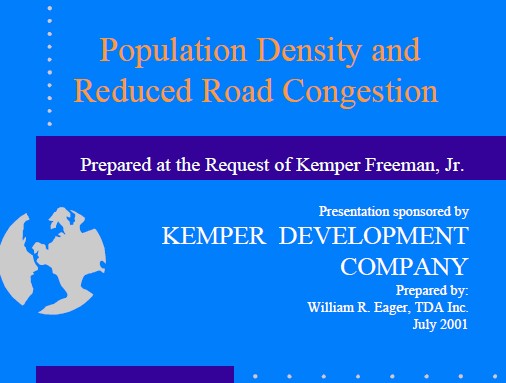
See this study at the American Dream Coalition: http://americandreamcoalition.org/landuse/densityconge.pdf.
Additional studies on how to end Seattle gridlock can be downloaded at the TDA Inc. web site: http://www.tdanet.com/tda_inc_downloads_page.html
Other Sources of Info –
Robert Robb, Arizona newspaper editorial, Taxes Should Go to Education not Light Rail http://www.azcentral.com/story/robertrobb/2015/03/02/phoenix-transit-tax-bad-for-education/24268335/ John Washington on Property Values Down from Light Rail http://www.scottsdaletrails.com/2015/03/02/the-myth-of-light-rails-property-value-impact/ Kemper Freeman / Bill Eagar PhD http://www.kemperfreeman.com/wp-content/uploads/2012/12/The-Land-Use-Transportation-Connection.pdf http://www.kemperfreeman.com/wp-content/uploads/2012/12/MythRealityPresentation1-2.pdf Kemper Development Company, Bellevue, Washington, Says No To Light Rail in Bellevue http://www.bellevuesquare.com/KemperDevelopmentCompany.php
